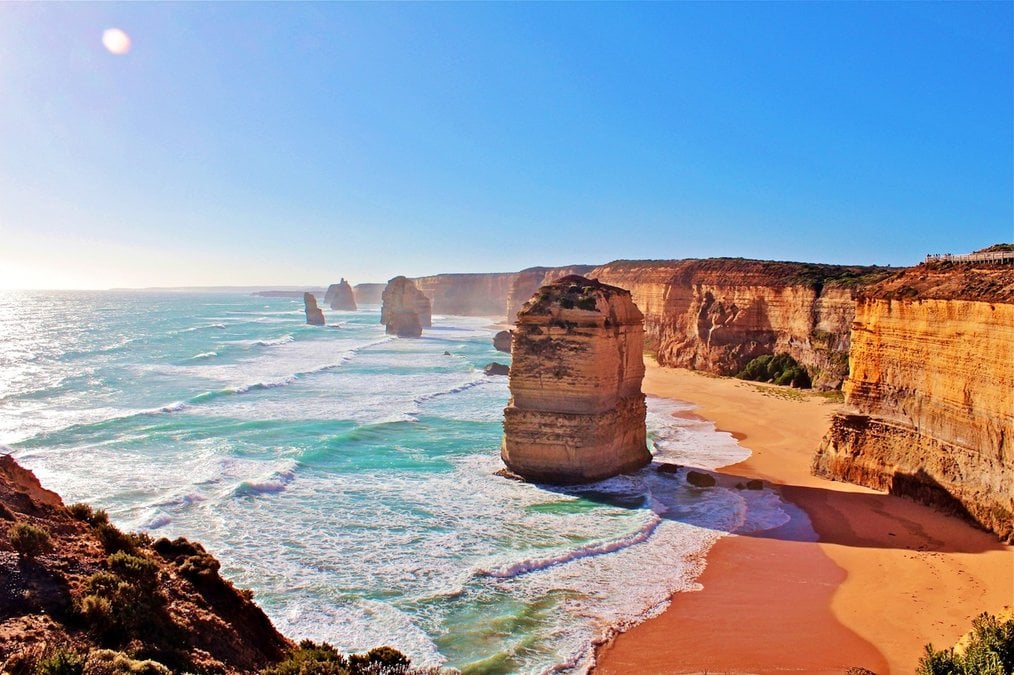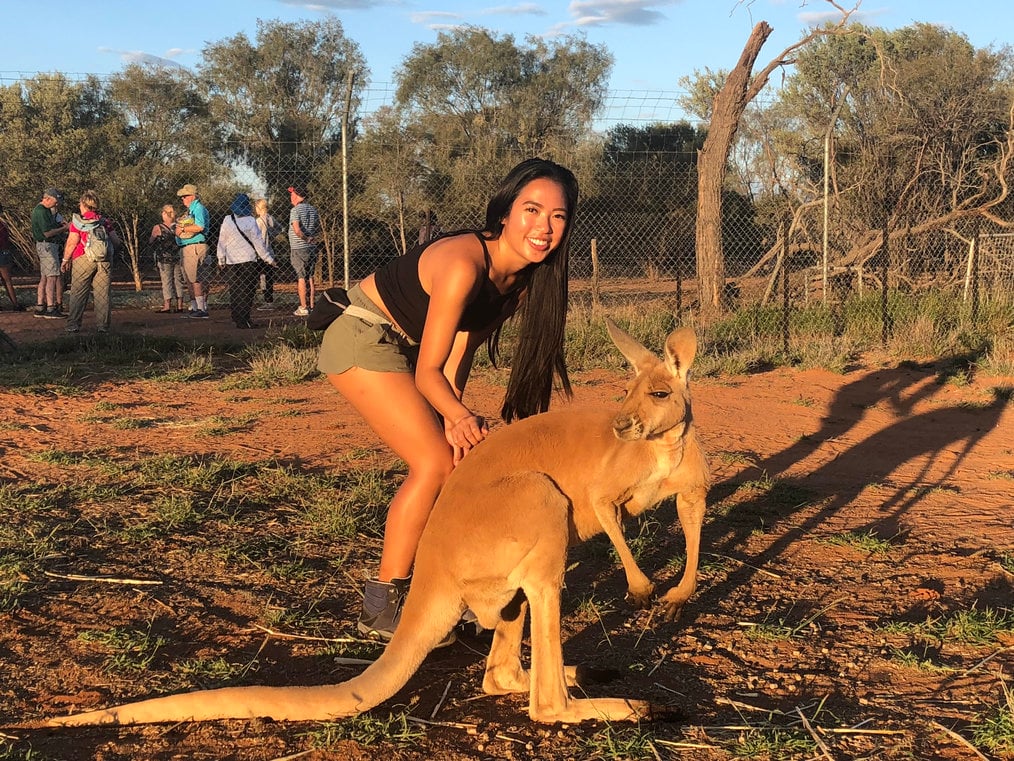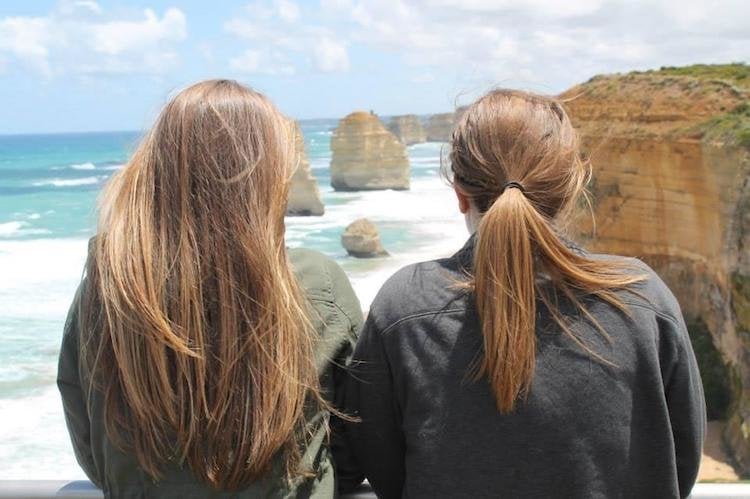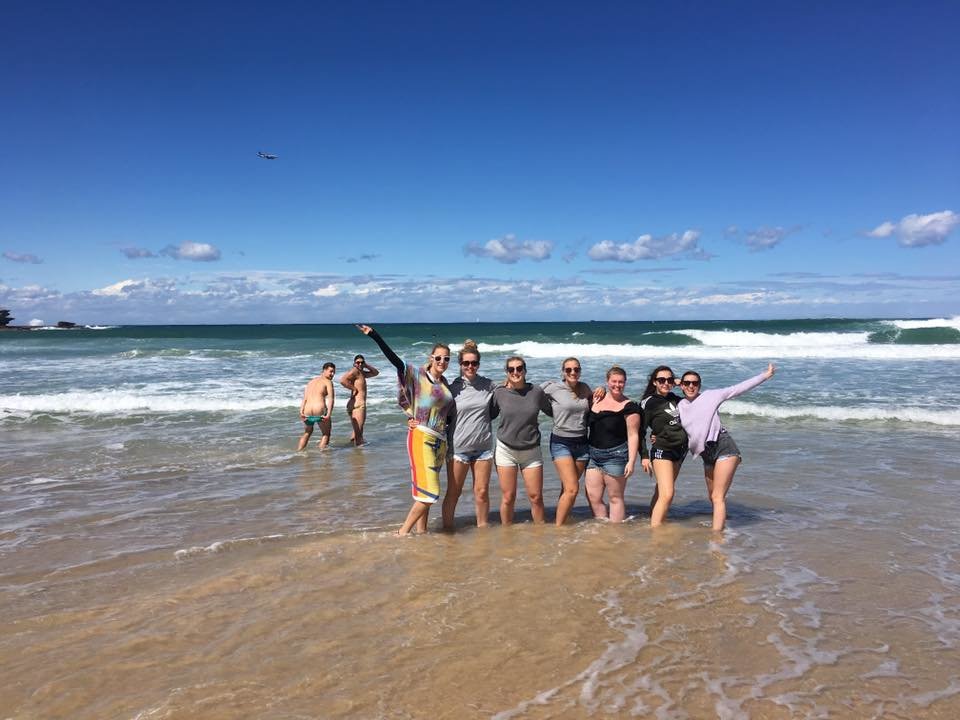What You Need to Know About the Australia Working Holiday Visa
Your comprehensive guide to the Australian working holiday visa program and how to make money while traveling throughout Australia.

The combination of immense natural beauty and a welcoming working holiday visa program makes Australia one of the best places on Earth to get a job overseas or take a gap year. This visa scheme makes it easy for travelers to get paid during their time traveling throughout Australia without worrying about violating a tourist visa.
A working holiday visa (WHV) permits visitors to travel and work within Australia for one year, making it the perfect launchpad for getting a job in Australia. No matter your international travel experience, though, you probably have a few questions on how to prepare for a working holiday in Australia, what to do once you're there, and how to wrap it all up -- making the most out of your time overseas.
This extensive guide to help you through the process and ensure you have a meaningful experience working and traveling in Australia.
Basic Eligibility requirements are as follows:
- Must be 18 to 30 years old, except for citizens of Canada, France, and Ireland, who may be up to 35 years old
- Must have a valid passport from an eligible country
- Must not be accompanied by a dependent
If you're considering the Working Holiday Visa, be sure to check the Australian Home Office website for the latest information, requirements, and restrictions before you apply.
What to Know Before You Go to Australia

Before hopping on the long flight down to Australia, ensure you have everything prepared to get through immigration. You should sort out your entry requirements far before your trip. In fact, plan to start this at least three months before you head out -- just in case there are any complications. Here are three of the most important things to remember:
Secure a Working Holiday Visa
Maybe this is an obvious one, but step one to a working holiday in Australia is getting the working holiday visa!
While this is an electronic visa (which means that you won’t need a paper in your passport), it's a good idea to bring a printed copy of the confirmation of your visa with you just in case. To apply, you will need to create an account with the Australia Department of Affairs and fill out the application online. There are two types of holiday visas for Australia – Working Holiday Visa (subclass 417) and Work and Holiday Visa (subclass 462). They sound nearly identical, but which country you come from determines which one you apply for so be sure to research the type of visa for which you qualify. With your work and holiday visa, you can stay and work for up to 12 months.
Note: When applying for your visa, you will also be required to pass a healthcare and character assessment. This commonly includes a chest X-ray and basic medical examination. You may also be asked to provide a background check.
Arrange Your Finances
Have proof of finances for your working holiday. Technically, to enter Australia on a working holiday visa, you’re required to have one of three things:
- A bank statement proving access to a minimum of $5,000 AUD (around USD $4,000)
- A booked departure flight back out of the country or enough additional funds to purchase one
Ensure you'll have access to everything you need by printing out proof of the above or bringing a bank statement with you when you leave for Australia. We recommend having a travel folder with you whenever you travel internationally to guarantee quick access to the required paperwork when asked.
Choose a Location
A benefit of a working holiday in Australia is the flexibility it provides. Go where you want and enjoy it to the fullest, or stay in one spot and work full-time. For an effective working holiday, settle down in a few places for an extended period of time. Work your 9-to-5 in Melbourne's beach suburb, St. Kilda, during the week, then relax on the sun-dappled Luna Park lawn as the sun goes down. Remember that Australia is an enormous country with expansive deserts, so moving from town to town may take far longer than expected.
Here are popular locations where you can enjoy your working holiday in Australia:
- Sydney may not be the capital, but it’s certainly the most expansive city in the country. Bondi and Manly are hip areas with loads of young travelers, and you can easily hit places like the Blue Mountains for a more natural experience.
- Melbourne is the cultural center of Australia, with tons of live music, shows, food, and a vibe unmatched by any other city. It’s also home to the Great Ocean Road: one of the world's best road trips.
- Brisbane is small and intimate compared to the other cities, but is modern enough to keep things interesting, and its central location lets you bounce to every other part of the country easily.
What to Do During Your Stay in Australia

Once you've saved up enough, your documents are in order, flights are booked, and you have a bucket list full of Australian destinations to travel to, you're good to go! Here are four things you should know to get started and maintain a positive working holiday visa experience.
To-Do List Upon Arrival
Once you arrive in Australia, it is best to fight through the grueling jet lag and be sure to get these items done as soon as you arrive.
- Open a bank account: The first thing you should do when you arrive is open a bank account. A few good options include ANZ, Commonwealth, and Westpac. Workers who will eventually travel to New Zealand will enjoy using ANZ, as it is available in both countries.
- Get a new phone number: There are a few major mobile networks in Australia, including Telstra, Vodafone, and Optus. Don’t bother springing for a new iPhone when you arrive. Electronics in Australia are expensive and will break the bank if you’re on a budget. Bring an unlocked smartphone from home instead.
- Find Housing: In Australia, rent is paid weekly, not monthly. For a basic room, expect to pay around $130-150 AUD ($95-$110) each week. Nicer rooms, be they larger or in better locations, will usually cost between $190-$230 AUD ($140-$170) a week. Look at Gumtree or hostel message boards to find listings; people will always be looking for roommates.
- Apply for your tax number: You’ll need this for any job you manage to lock down. It’s how the Australian Tax Office keeps track of your finances. Applying is as simple as sending in a form online -- use your current accommodation’s location when prompted for an address.
Find a Job
Once you’re all set up in the country, you can focus on working in Australia. Technically, your visa will allow you to work any job that hires you. In practice, most businesses are well aware of the mercurial nature of travelers who choose the working holiday visa. Some are hesitant to bring travelers into the fold. Additionally, while you're legally permitted to work throughout your stay in Australia on the WHV scheme, you are only allowed to work six months with a single employer (with some exemptions).
As such, these are the most popular jobs in Australia for WHV holders:
- Restaurants & Bars: These places are always hiring, and it’s one of the few places where your accent is actually a bonus. Talking to the patrons will usually net you some decent conversation and maybe some tips (note: tipping isn’t a requirement in Australia).
- Retail: While many bigger shops are just as hesitant to hire travelers as any corporation, the more heavily trafficked tourist shops accept the high turnover rate that comes from hiring international travelers.
- Hostels: Jobs at a hostel will usually involve reception or housekeeping service, but be careful. Many work arrangements require a few hours of work a day in exchange for free rent, which isn’t really conducive to actually making money.
- Sales/Fundraising: Be it telemarketing or door-to-door, these places love travelers. Just watch out for people that promise a commission-based salary, as they often take advantage of people desperate for work.
- Seasonal/Farm Work: These jobs cater to the people trying to get their second-year visa, and specifically seek out backpackers to fill the positions. It’s grueling work, but they also pay out a lot including room and board. If manual labor is your thing, check out WWOOF for awesome work exchange opportunities on organic farms.
Personal recommendations, working holiday programs, and online job boards are often the best way to find jobs. The minimum wage in the country is currently $19.84 AUD (about $15.30) per hour, and you can expect to earn more than that depending on where you work.
Traveling Within Australia
Australia is a huge country, and a lot of that space is wide open. Getting around can be a bit of a chore, but you’ve got options.
- Flying isn't always the best budget option but can be necessary at times.
- Open buses are a good idea. You buy a ticket to a destination, and you’ll get a certain number of times you can hop on and hop off along the way. You just need to let them know when you’ll be on the bus, and you’re free to explore the route they take.
- Rent or buy a car: This is the best way to see the country. You’ll be able to stop anywhere that looks appealing, and if you get a van with a bed in the back, you won’t even need to book accommodation. Van rental services are extremely popular in Australia and New Zealand, with options that span nearly every budget.
Depending on how much of Australia you want to see, you could choose one or a combination of all of these options to experience your temporary home.
Taking a Holiday
You can’t have a working holiday in Australia if you forego the “holiday” part, right? Australia is a great place to travel through, and there is so much from which to choose! Here are some exciting destinations to enjoy while you’re there:
- East Coast: By far the most popular route to visit in Australia, which includes Queensland and New South Wales. The East Coast is full of beautiful beaches and even more beautiful people. Add Cape Tribulation, the Great Barrier Reef, and the Atherton Tablelands to your itinerary.
- The Red Center: Start in Adelaide and work your way north through the famous opal mines and desert before you reach Uluru/Ayer’s Rock.
- West Coast: Few travelers actually make it that far away from the beaches of the east. But if you can get to the Left Coast, you can see a different side of Australia.
- Tasmania: Tasmania is home to natural beauties like Bay of Fire, Cradle Mountain, and Wineglass Bay. You can spend weeks here and still have more to see. Not to mention, the Museum of Old and New Art (MONA) in Hobart is one of the best museums in the entire world.
What to Do at the End of Your Year in Australia

This will undoubtedly be the hardest part of your working holiday, but all good things must come to an end (to make room for more good things, of course). Here's what to do at the end of your working holiday in Australia.
Cash Out
If you’ve been working a decent amount, then you’ve got some money coming your way. Although there are changes in Australia’s new budget laws, people with working holiday visas are entitled to claim some back taxes they’ve paid over the year.
That means once you’ve left the country or before you leave, you can file a tax return (even if it’s not the end of the tax year) and have extra cash deposited into your account. Claiming that money back is as simple as downloading a form from the Visa Bureau and mailing it in.
Extend Your Stay
Is it possible to extend your visa if you don’t want to leave? Of course! Here are some ways to extend your stay in Australia:
- Second (or Third) Year Working Holiday Visa: Some working holiday visa holders are eligible to earn a second year’s working holiday by doing regional farm work. This is great if you want to try and stay in the country for a long time, but keep in mind the work is difficult, remote, and long.
- Student Visa: Ideally, you'll use this before even considering the working holiday visa. Australia has some amazing universities and technical schools, meaning you can get a full degree and explore the country while you're at it. By signing up for classes as a school, you can get a student visa. Like sponsorships, this visa will tie you to a specific location for some time, so make sure you truly want to stay there.
- Partner Visa: This one is the hardest to get… and not just because of the paperwork. The De Facto visa (aka partner visa) refers to “De Facto Spouse,” and means that you’re in a long-term, committed relationship with an Australian who is so desperately in love with you that they can’t bear to see you leave. You don’t need to be married, but you definitely need to be on your way there. The Government will expect documentation of your relationship from beginning to present, as well as testimonies from people that know you. Learn more and apply for a partner visa through the Australian Government Department of Home Affairs website
This section is a brief synopsis of each type of visa you might be eligible for if you want to stay in Australia. Follow the above links to continue your research and apply if you're going to try one of these options.
Apply Today!
By now, you should know just about everything you’ll need to know about working and traveling in Australia. The only thing left to do is go out and live it. Australia is truly a fantastic country to visit, and the opportunities to work and play are endless. The fact that it is possible to make money while traveling throughout Australia is a dream come true for many, and by following these simple steps, you can make this dream a reality!
A working holiday in Australia is a chance not just to work and travel throughout Australia, but to discover yourself beyond your comfort zone in a stunningly beautiful country.
This post was originally published in June 2015 and was updated in February 2019 and July 2021.
